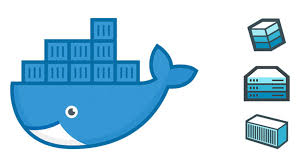To Containerize Docker is now easy with the assistance of our Support team. Let’s find out how?
As part of our Docker Hosting Support Service, Bobcares responds to all inquiries, no matter the size.
Let’s take a closer look at Containerization in Docker.
Containerization In Docker
Docker containers make it easier to create, deploy, and run applications. Containers are multiple virtual units in the user-space that is created by OS-based virtualization, also known as Containerization. It can run almost anywhere, making development and deployment much easier.
They also virtualize CPU, memory, storage, and network resources at the operating system level, giving developers a virtualized view of the operating system that is logically isolated from other applications. Docker is the most widely used open-source container format. Google Cloud Platform as well as Google Kubernetes Engine supports it.
Now we can examine more on how to Containerize Docker.
Architecture Of Docker

The main components of Docker Architecture include:
- Clients and Servers: Docker is a client-server model. All containers comprise the Docker Daemon/Server. The Docker Daemon/Server receives the request from the Docker client via CLI or REST APIs and processes it appropriately.
- Images: Using a read-only template, images build Docker containers. The foundation of every image is a base image, such as Ubuntu 14.04 LTS or Fedora 20.
- File: A Dockerfile is a text file that contains instructions for building the Docker image. This image includes all of the project’s code and dependencies.
- Registries: Docker Registry is a component for storing Docker images. We can store the images in either public or private repositories, allowing multiple users to collaborate on the application’s development.
- Containers: They are runtime instances of Docker images. Containers contain the entire application kit, allowing the application to run in isolation.
The Docker Image and Docker Container are the two important terminologies we must keep in mind while going forward with this article. Now let’s discuss creating the docker container from the Docker image and containerizing the Docker.
Using A Docker Image To Build The First Docker Container
Now with a simple example, we will build the first Docker container from the Docker image. Type the following command in the command prompt:
docker run hello-worldThe
docker run hello-worldTo View Docker Container And Image
We can see the container and image with the below commands respectively:
docker ps -adocker imagesElse, we can also open the Docker Desktop app and navigate to the Images section on the left side of the screen, where we can see the hello-world image.
We should now see a container with a randomly assigned name if we click on the Containers / Apps items on the left side. By clicking, we can view the container’s logs, as well as the environment variables associated with the container and the running container’s statistics.
To Remove a Container
To delete a container, firstly use the
docker ps -adocker rmTo Stop a Container
If we need to stop a running container, then we can use the Docker stop command with the container ID of the container we want to stop.
Benefits of Docker Containers
Our Support team lists some of the main benefits of the containers as:
- Portable: The apps built inside Docker containers are extremely portable.
- Scalable: It is also easy to move containers from a cloud environment to a local host, and then back to the cloud.
- Speed: Development, testing, and deployment will be faster as containers are small, thus making it fast.
[Looking for a response to another question? We’re are available 24/7.]
Conclusion
Containers are multiple virtual units in the user space that are created by OS-based virtualization, also known as Containerization. In this article, our Expert team provides the necessary details on containerization in Docker along with the architecture of Docker.
PREVENT YOUR SERVER FROM CRASHING!
Never again lose customers to poor server speed! Let us help you.
Our server experts will monitor & maintain your server 24/7 so that it remains lightning fast and secure.







0 Comments